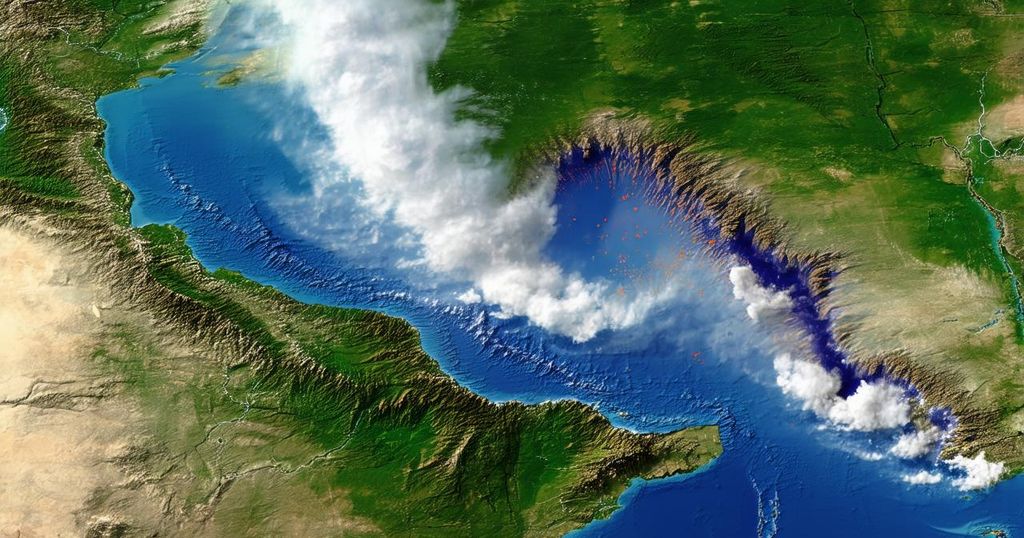The Strongest Earthquakes Ever Recorded
This article discusses the five strongest earthquakes ever recorded, focusing on their magnitudes and the consequent destruction. The Valdivia Earthquake holds the record at 9.5, followed by the Great Alaska Earthquake (9.2), the Sumatra-Andaman Earthquake (9.1), the Tohoku Earthquake (9.1), and the Kamchatka Earthquake (9.0). It highlights the catastrophic effects of these earthquakes and the importance of improved readiness and infrastructure in seismic zones.
The strongest earthquake ever documented is the Valdivia Earthquake, also referred to as the Great Chilean Earthquake, which registered a staggering magnitude of 9.5 on May 22, 1960. Originating in the Bio-Bio region of Chile, it produced violent tremors lasting roughly ten minutes and unleashed a series of tsunami waves throughout the Pacific Ocean. The disaster resulted in an estimated 1,600 fatalities, around 3,000 injuries, and left two million people homeless. The ensuing tsunami waves caused additional casualties in coastal regions of Hawaii, Japan, and the Philippines. The second most powerful earthquake occurred on March 27, 1964, known as the 1964 Great Alaska Earthquake, which measured 9.2 in magnitude. This earthquake devastated Anchorage and surrounding areas, destroying numerous structures due to severe shaking and land subsidence. It also generated a tsunami that affected coastal areas across the Pacific, with a death toll of 131 due to the relatively sparse population in the impacted regions. Another significant event was the 2004 Sumatra-Andaman Earthquake, which took place on December 26, 2004, and measured 9.1 in magnitude. This quake triggered a catastrophic tsunami affecting multiple countries, including Indonesia, Thailand, and Sri Lanka, leading to over 230,000 deaths and immense destruction in Sumatra. The 2011 Tohoku Earthquake, measuring 9.1, struck near Japan’s east coast on March 11, 2011. It triggered a devastating tsunami and resulted in approximately 18,000 deaths while causing the Fukushima nuclear disaster. The tsunami waves reached far-off locations, prompting Japan to reevaluate its building codes and emergency preparedness. Lastly, the Kamchatka Earthquake occurred on November 4, 1952, with a magnitude of 9.0. Although less lethal due to its remote epicenter, this quake still resulted in a death toll between 10,000 to 15,000 and significant tsunami impacts on the Aleutian Islands and Hawaiian coasts. The town of Severo-Kurilsk was particularly affected, as it faced towering wave heights that obliterated a significant portion of its population. Survivors adapted by relocating their community to higher ground, illustrating the long-lasting effects such seismic events can have on vulnerable areas.
Earthquakes are classified by their magnitude, which measures the energy released at the source of the earthquake. The strongest earthquakes recorded historically provide an insight into the earth’s geological activities and their impacts on human civilization. The earthquakes highlighted in this summary rank among the highest on the moment magnitude scale and exemplify the vast destruction that can arise from these natural disasters. Understanding these significant events is crucial for improving disaster preparedness and risk management in seismically active regions.
In conclusion, the strongest earthquakes recorded in history highlight the immense power that geological events possess, particularly the Valdivia Earthquake, the Great Alaska Earthquake, the Sumatra-Andaman Earthquake, the Tohoku Earthquake, and the Kamchatka Earthquake. Each of these disasters not only caused considerable loss of life but also prompted significant advancements in emergency response strategies and building regulations worldwide. The lessons learned from these seismic events continue to shape policies aimed at minimizing the devastating impacts of future earthquakes.
Original Source: science.howstuffworks.com




Post Comment